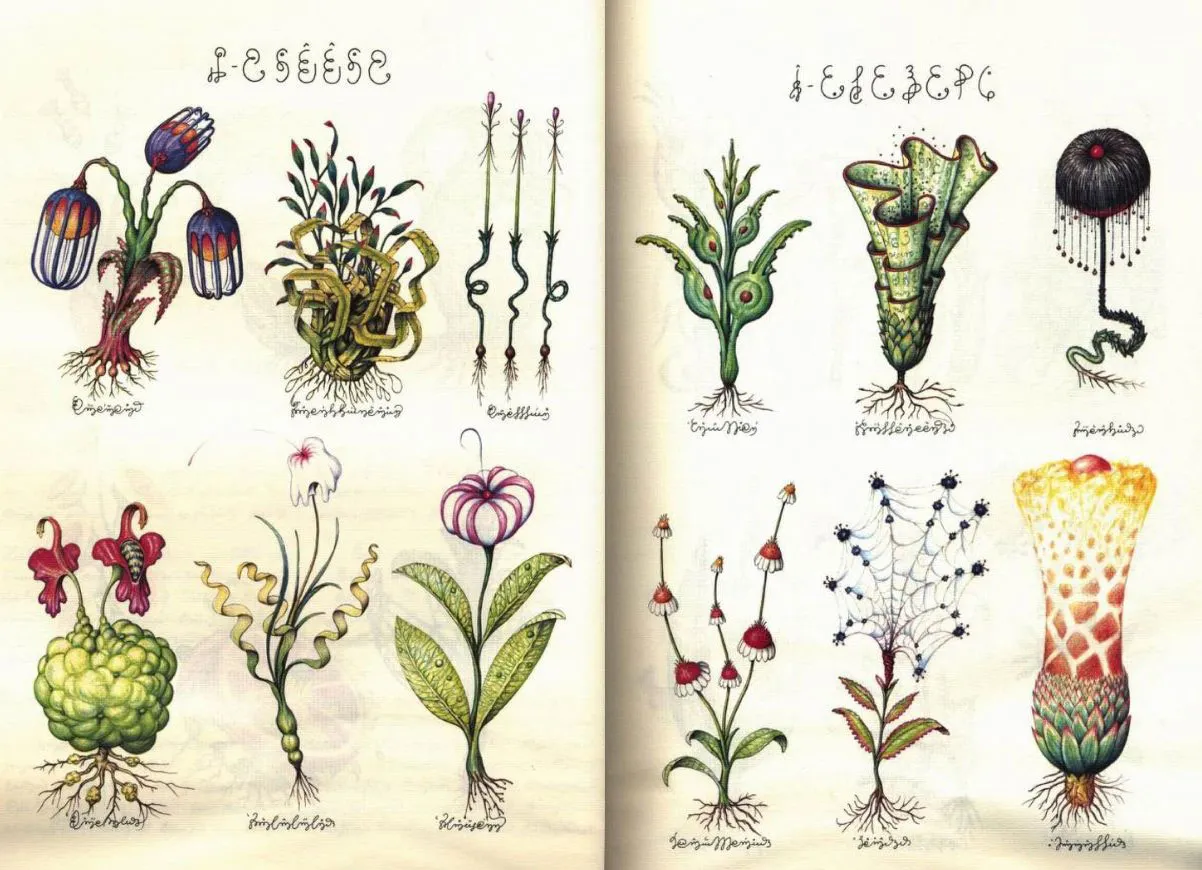
Codex Seraphinianus
The Weirdest Encyclopedia Ever
Luigi Serafini
Luigi Serafini's Codex Seraphinianus (1981) represents one of the most ambitious examples of invented mythology in modern times. This illustrated encyclopedia of an imaginary world, written in an invented language and filled with surreal illustrations of bizarre flora, fauna, and technologies, demonstrates the persistent human drive to create comprehensive symbolic systems even in an age dominated by scientific rationalism.
The Codex's resemblance to real historical mysteries like the Voynich manuscript positions it within a tradition of boundary-crossing texts that challenge conventional categorisations. By creating a work that mimics scientific documentation while depicting impossible creatures and phenomena, Serafini blurs the distinction between factual recording and imaginative creation—calling attention to how all systems of knowledge involve elements of both.
Particularly significant is Serafini's revelation that the text is intentionally asemic—resembling writing but carrying no specific meaning. This approach creates an experience similar to what children feel when confronted with texts they cannot yet comprehend, positioning readers in a state of productive confusion that stimulates imaginative engagement. The work thus becomes a meditation on the relationship between knowledge, imagination, and the limitations of human understanding.
The Codex's structure—covering natural phenomena, human activities, and abstract concepts—mirrors traditional encyclopedias while subverting their claim to comprehensive factual authority. By creating detailed illustrations of bleeding fruits, chair-plants, and humans with tools grafted onto their bodies, Serafini invites viewers to question the boundaries we draw between natural and artificial, possible and impossible. The work's enduring appeal demonstrates the continued human fascination with comprehensive mythological systems, even in an age where scientific explanation has largely displaced traditional mythology as the dominant explanatory framework.
𝌇 READ: "Codex Seraphinianus, Look Inside the Extremely Rare Codex Seraphinianus, the Weirdest Encyclopedia Ever", Andrea Girolami, Wired; ▷ LISTEN: "Codex Seraphinianus, the Bizarre Encyclopedia by Luigi Serafini", Weird Italy, Apple Podcasts; ▷ WATCH: "Codex Seraphinianus, Book walkthrough", Distant Mirrors, YouTube.
↑ ▢ "Codex Seraphinianus", 1981. Selected spreads from Codex Seraphinianus by Luigi Serafini; |<– ▢ ▢ ▢ –>| Extracts from same. Support images in slider above sourced from links provided, Wikimedia Commons and Creative Commons; Source: Lombard Editions/Luigi Serafini.
Copyright: Source materials belong to the public domain sources they originate from. See source site links for full rights and usage details. Materials shared on this site are used in accordance with Public Domain, Creative Commons, Open Access licenses, or applicable Fair Use principles. All rights remain with the original creators.
Copyright: Source materials belong to the public domain sources they originate from. See source site links for full rights and usage details. Materials shared on this site are used in accordance with Public Domain, Creative Commons, Open Access licenses, or applicable Fair Use principles. All rights remain with the original creators.













%2520-%2520Kristi%2520Fekete.png)









